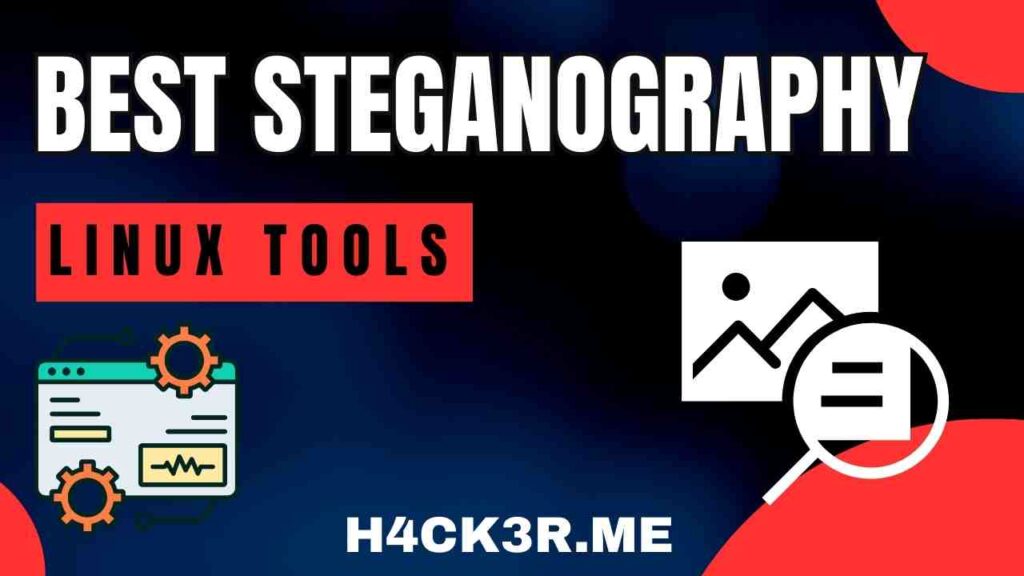The Best Steganography Linux Tools

The Best Steganography Linux Tools
Table of Contents
Introduction
Steganography, the art of hiding information within seemingly innocuous data, has been used for centuries to protect sensitive information. In today’s digital age, steganography plays a crucial role in safeguarding data from prying eyes. Linux, known for its versatility and robustness, offers an array of powerful steganography tools to help you hide data within images, audio files, or even text. In this comprehensive guide, we will explore the best steganography tools available for Linux users, equipping you with the knowledge to protect your data effectively.
Understanding Steganography
Steganography is the practice of concealing one piece of information within another to ensure that it remains hidden from unintended recipients. Unlike cryptography, which focuses on making data unreadable to unauthorized users, steganography aims to hide the very existence of the data. This covert communication method has applications in various fields, including cybersecurity, law enforcement, journalism, and digital forensics.
Benefits of Steganography in Linux
Linux, with its open-source nature and extensive developer community, offers a fertile ground for steganography tool development. Here are some key advantages of using Linux for steganography:
- Customizability: Linux allows users to tailor their steganography tools to their specific needs, making it easier to implement unique solutions.
- Security: Linux’s robust security features provide a safer environment for steganography operations, reducing the risk of data leaks.
- Community Support: The Linux community actively contributes to the development and improvement of steganography tools, ensuring that they remain up-to-date and secure.
Top Steganography Tools for Linux
Let’s delve into the best steganography tools available for Linux:
1. Steghide:
Steghide is a popular command-line tool that excels at hiding data within various image and audio formats. It offers strong encryption and password protection to secure your hidden information. Steghide is widely used due to its ease of use and reliability.
sudo apt update
sudo apt install steghide
2. OpenStego:
OpenStego is an open-source steganography software that provides both graphical and command-line interfaces. It supports a wide range of image formats and offers robust security features. OpenStego allows you to embed hidden data and extract it using passphrase-based encryption.
sudo apt update
sudo apt install openstego
3. SilentEye:
SilentEye is another open-source steganography tool that stands out for its user-friendly graphical interface. It supports multiple image and audio formats and provides a visual preview of the steganographic process. SilentEye’s simplicity makes it accessible for users of all skill levels.
sudo apt update
sudo apt install silenteye
4. OutGuess:
OutGuess is a command-line steganography tool known for its ability to hide data within image files while maintaining the visual integrity of the image. It employs a variety of techniques to ensure that the hidden data remains undetectable. OutGuess is highly regarded for its effectiveness.
sudo apt update
sudo apt install outguess
5. StegCracker:
StegCracker is a handy tool designed specifically for cracking steganography passwords. It supports various steganography tools, including Steghide and OutGuess. With its dictionary attack capabilities, StegCracker helps recover passwords used to protect hidden data.
sudo apt update
sudo apt install python3 python3-pip
pip3 install stegcracker
Practical Applications
Steganography finds applications in several fields and scenarios:
- Cybersecurity: Concealing sensitive data within images can protect it from unauthorized access during data transmission or storage.
- Whistleblowing: Journalists and whistleblowers can use steganography to hide information within images to protect sources and expose wrongdoing.
- Digital Forensics: Forensic investigators employ steganography tools to detect hidden data in digital evidence and uncover concealed information.
- Privacy Preservation: Individuals concerned about online privacy can use steganography to protect their personal data from surveillance and data mining.
Risks and Ethical Considerations
While steganography offers valuable benefits, it also raises ethical and security concerns:
Malicious Use: Steganography can be used for malicious purposes, such as hiding malware within seemingly harmless files to bypass security measures.
Privacy Invasion: In some cases, steganography can be used to invade privacy by hiding unauthorized surveillance data within innocent-looking files.
Legal Implications: The use of steganography in certain situations may be subject to legal regulations, requiring individuals to use it responsibly and ethically.
Conclusion
In a world where data privacy and security are paramount, steganography tools for Linux offer a powerful means to protect sensitive information. Whether you’re safeguarding confidential data, exposing wrongdoing, or conducting digital forensics, Linux-based steganography tools provide the versatility and reliability you need.
As you explore the world of steganography in Linux, remember the ethical considerations and legal implications that come with this technology. Use it responsibly to protect your data and respect the privacy of others.
In conclusion, Linux provides a fertile ground for steganography tool development, and the tools mentioned in this guide are just a glimpse into the vast world of steganography. As technology evolves, so too will the capabilities and applications of steganography in Linux, ensuring that this covert communication method remains a valuable asset in the realm of data protection and privacy preservation.